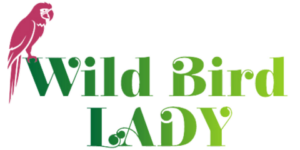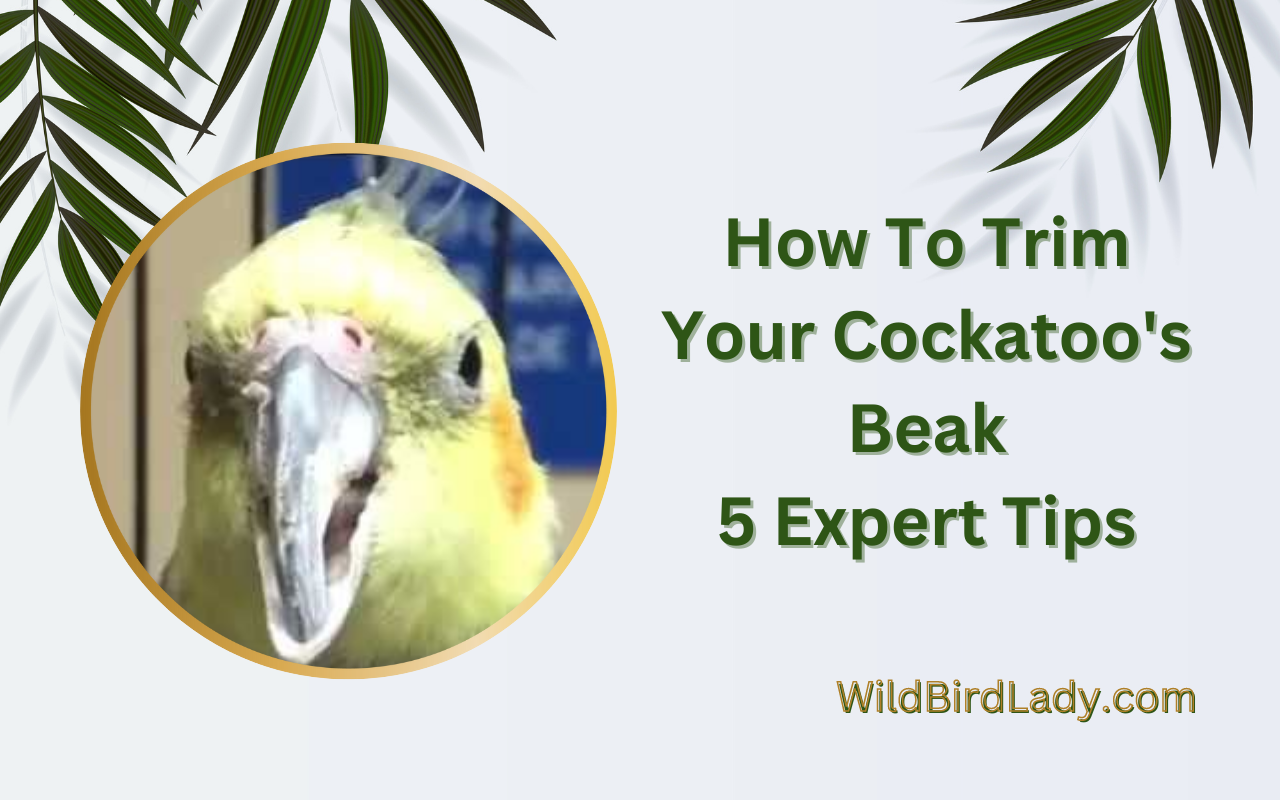To trim your cockatoo’s beak, seek a professional bird groomer or veterinarian. Cockatoos have curved beaks that require regular trimming to prevent overgrowth and potential health issues.
Neglecting a cockatoo’s beak can cause difficulties eating, preening, and even breathing. Cockatoos are beautiful, intelligent, and social birds that make great companions. These birds are known for their curved beaks that require regular trimming. If you are a new owner or have never trimmed your cockatoo’s beak before, it’s crucial to seek a professional.
While some experienced bird owners may feel comfortable trimming their bird’s beak at home, it can be a risky endeavor for beginners. Overgrown beaks can become problematic and make it difficult for cockatoos to eat or preen themselves properly, and may even lead to breathing difficulties. This article outlines some guidelines to help you understand how to trim your cockatoo’s beak safely and effectively.

Credit: www.omlet.co.uk
Understanding Cockatoo Beak Anatomy
Cockatoo beaks are essential to a bird’s survival, serving multiple purposes like breaking open tough food items, grasping objects, and defense against predators. Understanding the anatomy of your cockatoo’s beak can help you to provide appropriate care effectively. Here are the key points to keep in mind.
How The Cockatoo Beak Grows
Cockatoos have a unique pattern of beak growth. Beak growth in most birds is continuous but not in cockatoos. Cockatoo beaks grow and wear down concurrently, so they must remain healthy and strong to avoid cracking or breaking. A well-maintained beak ensures the bird’s overall health and happiness.
The Different Parts Of A Cockatoo’S Beak
Cockatoo beaks have two primary sections – the upper and lower mandibles. Each of these mandibles contains several parts that are necessary for the bird’s survival. Here’s a breakdown of each part:
- The upper and lower mandibles: The beak’s primary components, the upper and lower mandibles, are made of keratin and consist of several important parts that play a role in a cockatoo’s health.
- Bill tip: The bill’s pointed tip is made up of a keratinized sheath covering the bony endoskeleton.
- Nostril: The nostril or nare is responsible for the exchange of air during breathing and may also contain dust filters that help to prevent dust from entering the bird’s lungs.
- Cere: The cere is a fleshy, hairless area located directly above the beak and below the eyes.
- Beak ridge: The ridge is a prominent extension of keratin at the base of the upper mandible.
Knowing the different parts of a cockatoo’s beak can help you identify any issues that could lead to health problems. Careful attention and regular maintenance will keep your cockatoo’s beak healthy, strong and ensure they remain healthy and happy.
Signs Your Cockatoo’S Beak Needs Trimming
Cockatoos are amazing pets to have in your home. They are intelligent, affectionate and playful, making them great companions. However, owning a cockatoo comes with several responsibilities, including maintaining their beaks. Cockatoos’ beaks grow constantly, and trimming them is crucial in maintaining their overall health.
In this blog post, we will provide you with expert tips on how to trim your cockatoo’s beak. Let’s begin with the signs that your cockatoo’s beak needs trimming.
Overgrown beaks can cause the following issues, and if you spot any of these signs, it is time to trim your bird’s beak:
- Difficulty eating or picking up food
- Obvious overgrowth of the beak
- Trouble holding onto perches
- Chewing on their feathers or other non-food items
- Change in behavior, such as aggression
Overgrowth Of The Beak
Cockatoos have different beak sizes, shapes and growth rates, depending on the species. For example, a moluccan cockatoo’s beak grows at a slower rate than a goffin’s cockatoo. However, overgrowth of the beak can affect any species of cockatoo. Here are a few essential tips to keep in mind while trimming your cockatoo’s beak:
- Regular check-ups: Regular check-ups with an avian vet can detect early signs of overgrowth, making it easier to trim the beak.
- Use suitable trimming tools: Trimming tools like nail clippers, dremel tool or bird nail trimmer are available to trim the beak. Make sure to use the right tool carefully.
- Sufficient lighting: Undertake the trimming process in a well-lit area to ensure that you can see every part of the beak.
Changes In The Texture Or Color Of The Beak
A healthy cockatoo’s beak should appear smooth and have a consistent texture throughout the length. A change in color or texture can indicate a health problem.
- Changes in texture: If you notice that your cockatoo’s beak appears bumpy or cracked, it might be due to an illness like psittacine beak and feather disease (pbfd), malnutrition or damage from a traumatic incident like slamming their beak on a hard surface.
- Changes in color: A sudden change in color can indicate an infection.
In conclusion, regular trimming of your cockatoo’s beak is essential to maintain their overall health. Knowing the signs and symptoms of an overgrown or unhealthy beak can help in identifying beak trims to prevent health issues. If you’re unsure or have never trimmed your bird’s beak before, seek advice from a professional ornithologist who can guide you properly.
How To Trim Your Cockatoo’S Beak: 5 Expert Tips
A cockatoo’s beak is not only for feeding but also for communication, climbing, and playing. Therefore, keeping its beak healthy and well-trimmed is essential for its overall well-being. Trimming a cockatoo’s beak can be a challenging task, but with the right tools and techniques, it can be done safely and efficiently.
Here are five tips from experts to help you trim your cockatoo’s beak with confidence.
Tip 1: Preparation Before Trimming The Beak
Preparation is essential before trimming your cockatoo’s beak. Here are some crucial steps to take before you start:
- Make sure that your cockatoo is comfortable with you. Spend some time with your bird before trimming its beak.
- Prepare a comfortable place for your cockatoo to perch, and ensure that it is in a well-lit area.
- Gather all the necessary tools that you will need to trim its beak.
- Ensure that you have some styptic powder or corn starch in case of any bleeding.
Tip 2: Choosing The Right Tools For The Job
Choosing the correct tools for trimming your cockatoo’s beak is essential. Using the wrong tools can lead to accidents or cause your bird pain. Here are some tools to consider:
- Beak trimmer: Buy a high-quality beak trimmer that is specifically designed for birds.
- Emery board: Purchase an emery board to smooth out rough edges after trimming your bird’s beak.
- Styptic powder or corn starch: Use either styptic powder or corn starch to stop any bleeding if necessary.
Tip 3: Techniques For Holding The Cockatoo While Trimming
Holding your cockatoo correctly while trimming its beak is essential to prevent any accidents and ensure that the bird is comfortable throughout the process. Here are some useful tips:
- Wrap the bird in a towel, leaving only its beak exposed if it tends to wiggle a lot.
- Hold its head steady while you trim its beak.
- Never hold your cockatoo’s beak shut while trimming it.
Tip 4: The Actual Process Of Trimming The Beak
The process of trimming a cockatoo’s beak can be daunting, but it doesn’t have to be. Follow these simple instructions:
- Hold your bird’s head steady with one hand and use the other hand to trim its beak.
- Only trim the tip of your bird’s beak. Do not cut too deep, as this could lead to bleeding.
- Avoid the nostrils while trimming as they are very sensitive.
Tip 5: Aftercare For Your Cockatoo
Aftercare is essential once you have trimmed your cockatoo’s beak. Here are some vital steps to follow:
- Smooth out rough edges using an emery board.
- Give your bird some treats after trimming its beak to reward it for its good behavior.
- Make sure that your bird is eating, drinking, and behaving normally after trimming its beak.
Trimming your cockatoo’s beak requires preparation, patience, and the right tools. Always consult with an avian veterinarian if you are unsure. By following these expert tips, you can maintain your cockatoo’s beak healthily, safely, and efficiently.
Frequently Asked Questions For How To Trim Your Cockatoo’S Beak
How Often Do You Need To Trim Your Cockatoo’S Beak?
It depends on the bird’s diet and behavior. Most cockatoos require trimming every 3-6 months, but some may need it more or less frequently.
Can I Trim My Cockatoo’S Beak At Home?
It is possible to trim your cockatoo’s beak at home, but it is highly recommended to seek advice from an experienced vet or bird groomer first.
What Tools Do I Need To Trim My Cockatoo’S Beak?
You will need a pair of bird nail clippers or shears specifically designed for trimming beaks along with a styptic powder to stop bleeding if necessary. Consult with a vet or bird groomer for further advice.
Is It Painful For The Cockatoo To Have Its Beak Trimmed?
If done correctly, beak trimming should not cause pain to the bird. However, if the beak is trimmed too short, it can cause bleeding and discomfort. It’s important to be careful and seek professional advice.
What Happens If I Don’T Trim My Cockatoo’S Beak?
If left untrimmed, a cockatoo’s beak can overgrow, making eating and drinking difficult, leading to potential malnutrition, and may cause injury to the bird or its cage. Seeking professional advice is always recommended.
Conclusion
Maintaining a cockatoo’s beak is essential for their overall health, and knowing how to trim their beak is crucial for their well-being. Remember to seek professional help in case of any doubts or hesitation when trimming your pet bird’s beak.
By following these steps, you can safely and efficiently trim your cockatoo’s beak. Creating a calm and stress-free environment is key to a successful trimming session. Regular trimmings will ensure that your cockatoo can eat and play without any discomfort or injury.
The process may seem daunting at first, but with patience and practice, you’ll be able to keep your pet bird’s beak in good shape. Keep in mind that a well-trimmed cockatoo’s beak is a happy and healthy bird!



